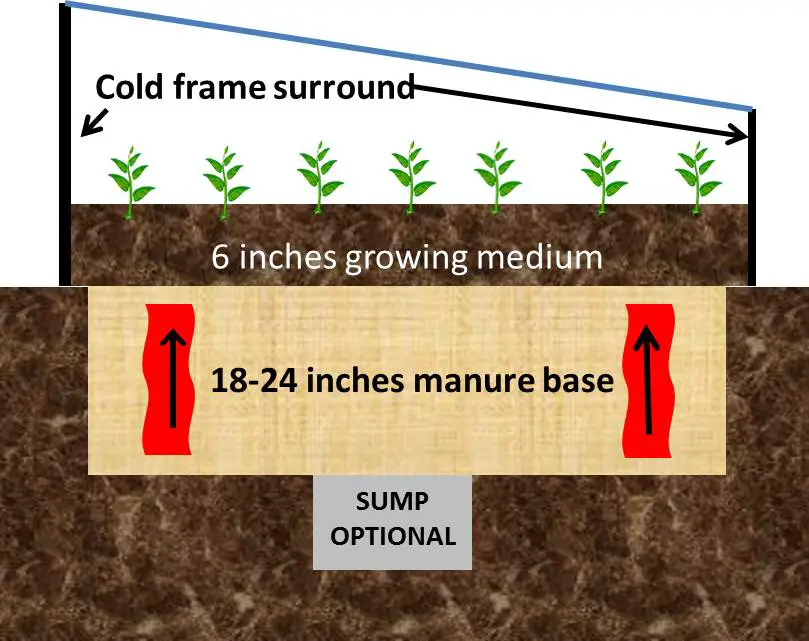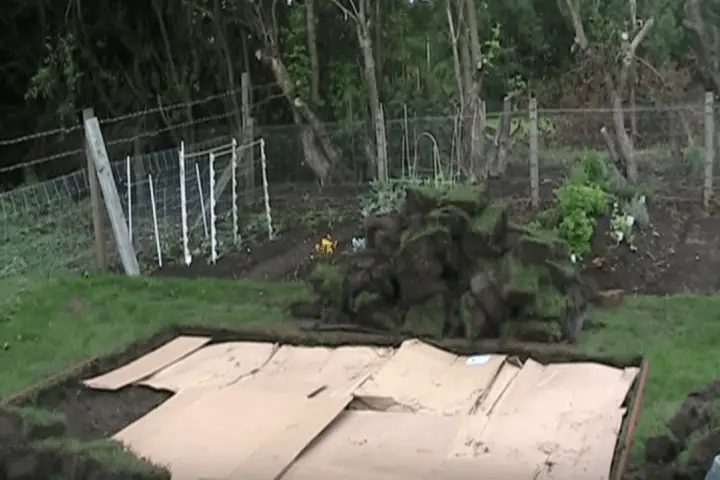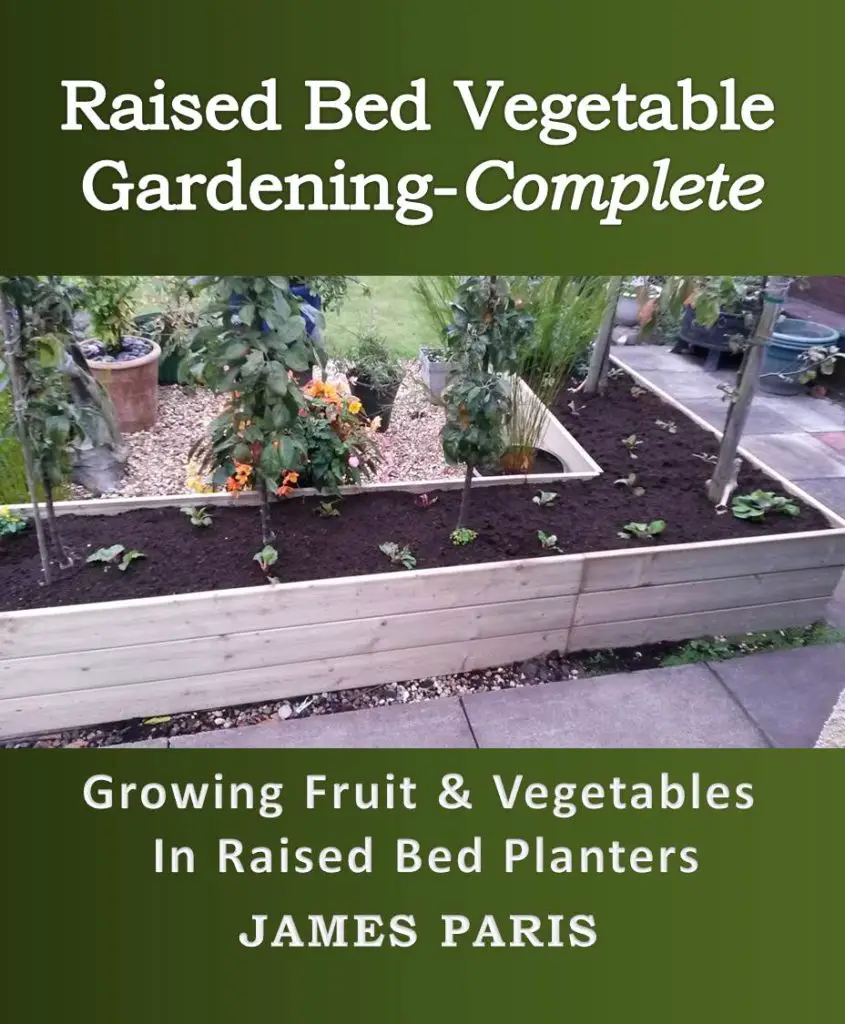Introducing No Dig Gardening
This is sometimes called no-till gardening, partly to distinguish the difference between that and traditional ‘row’ gardening, where heavy hand or mechanical tools are involved to till the ground prior to growing crops.
The basic principle behind no-dig gardening is that the vast majority of plants do not need more than 6-12 inches or so to ‘produce the goods’ and that most minerals (food for the plants) micro-organisms, fungi, worms etc, are actually in the top few inches of soil.
Therefore if you can create a nutrient-rich growing medium only a few inches deep, there is no need for deep-digging the soil. In fact deep-digging would be counter-productive most of the time in a no-dig garden environment.
Examples of No-Dig Gardens
Possibly the best known and used example of this gardening technique would be Raised Beds – and I include Square foot Gardens in this distinction of course as an SFG construction is another form of Raised Bed.
Gardens in this distinction of course as an SFG construction is another form of Raised Bed.
Admittedly the SFG just slightly different in its operation, as it incorporates Companion planting and rotational planting as a core principle of the SFG.
and rotational planting as a core principle of the SFG.
Keyhole gardening, Lasagna gardens, Container/Patio planting, Straw Bale gardens Hotbed and Hugelkultur Raised Beds are all examples of no-dig gardens incorporating some or all of the basic principles behind the no-dig garden.
and Hugelkultur Raised Beds are all examples of no-dig gardens incorporating some or all of the basic principles behind the no-dig garden.

Common No-Dig Questions & Answers
Does no-dig gardening work
Without a doubt this method does indeed work as it takes the most successful well-established practices behind centuries of vegetable growing and incorporates them into a methodology that suits the modern-day garden enthusiast.
that suits the modern-day garden enthusiast.
Now even the city dweller can grow their own healthy vegetables using one (or indeed several) of the no-dig gardening techniques available.
How much compost do I need for no dig
A typical raised bed measuring 8 x 4 x 12inches high will need 32 cubic foot of compost. Every 6 inches extra height will require 16 cubic foot. For a 4 x 4 raised bed then 8 cube per every 6 inch in height.
How long does it take for a no dig garden to break down
If the material is made from fresh mulch and/or green organic material then it will take at least 3 months before it breaks down for use. If it is made from mature compost and soil then it will be ready immediately without a break-down period.
What is the no dig method of gardening
This is a permaculture gardening method that preserves the integrity of the soil whilst growing vegetables without any heavy digging involved. This method relies on the natural breakdown of organic material to create a perfect natural growing environment that encourages natural regeneration of the soil.
Who invented no dig gardening
Although the concept surrounding growing vegetables in a compost heap has been around for centuries, Arthur Bowers is widely acclaimed to be the modern day ‘father’ of the no dig gardening method that utilizes the layering technique also called lasagna gardening.
Why are there no dig gardens
No dig is an excellent way to grow vegetables, as it relies on nature rather than artificial fertilizers to produce good organic crops. It is also a good way to use up organic kitchen waste and grass clippings. It is also an excellent way to turn neglected land into productive land.
When should I start no dig
For a layered no dig garden it is better to start a no dig garden in the late Autumn whilst there is still some warmth in the sun. It can then break down over the winter period ready for planting in the Spring season.
How do you make A no-dig garden
Just click on any of the links above that will take you to articles on several no dig gardening techniques. These will show you how the methods work and several articles throughout this site will lay out the different aspects of these gardens, from making your own composting material to building a Raised Bed frame to suit your particular requirements.
Can you plant in a no dig garden right away
Although it is best to let the material break down for several months, you can indeed plant some vegetables such as zucchini immediately, if you introduce a ‘plug’ of compost to start them off.
Can you start a no dig garden in the Spring
Although it is best to start in late Autumn as it allows time for the bed to ‘mature’. You can plant in the Spring especially if you are incorporating compost into the mix to give the vegetables an early start. Compost/soil mix gardens such as the square foot model can be started any time.
Can you plant immediately in a Lasagna garden
Lasagna gardening or layered gardening is best left to rot down for a few months before planting. However if you add 4-6 inches of topsoil or compost to the top layer you can plant vegetables right away if needs be.
What are the benefits of lasagna gardening
Since a lasagna garden can be built directly on top of soil or grass – even weeds, it means that you can make use of otherwise neglected ground that may not be suitable for growing vegetables in a traditional way. It is also a great way to use up kitchen vegetable waste.
How do you start a no-dig veg plot
Many people start with making a frame from timber called a Raised Bed as it contains the valuable soil mix. However you can just start by marking out a suitable position for your garden plot, and cover it with cardboard, add a 6” layer of home made compost using a good Raised Bed mix like these examples, and start planting!
Why no-dig gardening
There are many reasons why someone would choose this gardening method – not the least of which, is the fact that it is easier than traditional gardening and you get more produce from a smaller area, also…
- The soil is easier to dig even just with a hand fork.
- The plants are healthier owing to the compost mix
- Weeding is no longer a chore as the weeds are easily pulled out by hand from the soft mix.
- Crops tend to be fuller
- Harvesting is easier particularly if you use the Raised Bed system.
- No-dig gardens are well suited to small areas such as the square foot garden. This suits many urban gardeners who have limited space to spare.
- It’s a great way for the novice gardener to start with a manageable are to practice their gardening skills.
Do I need to dig first to loosen the soil
Personally I always like to loosen up the soil first before I set up my NDG. Depending on the depth of your mix you cannot just cover a hard soil surface with 2 inches of compost and expect carrots or parsnips to burst through the heavy soil when the root reaches it.
Like most gardening practices you have to exercise some reason. For instance if you are setting up your 18” deep Raised Bed frame on hard ground, then this is not a problem as it is filled with good soil/compost mix.
Should I put cardboard at the bottom of my Raised Bed.

While this is not essential, cardboard does do 2 things quite well. It encourages worms and it suppresses weeds. So in a shallow bed especially it is good to add cardboard if you have some handy.
How do you fill a Raised Bed cheaply
The bottom of deep Raised beds can be filled with old tree branches or lumber. Straw and forest debris or even stones. Keep enough depth of compost/topsoil for the vegetables you are growing. Tap-root veggies need at least 12 inches of topsoil.
How do you prepare the ground for a raised garden bed
The ground should be covered with cardboard if on grass to restrict growth and encourage worms. Otherwise there is very little preparation you need to do, as the infill mix for the raised bed is what is important to provide the correct nutrients and drainage.
How deep should a Raised Bed garden be
Depending on what vegetables you are growing, a raised bed can be from 4 inches to 24 inches. Deep tap-root crops need at least 10-18 inches for their roots to grow straight whilst cabbages can be grown in only 4-6 inches of soil.
These are just some of the aspects of no-dig gardening that hopefully you will find inspiring and if you are not already doing so, encourage you to try your hand at some of the amazing techniques available to the vegetable gardener even with little gardening knowledge and little room to spare for a veggie plot.
Just Do It 😊


